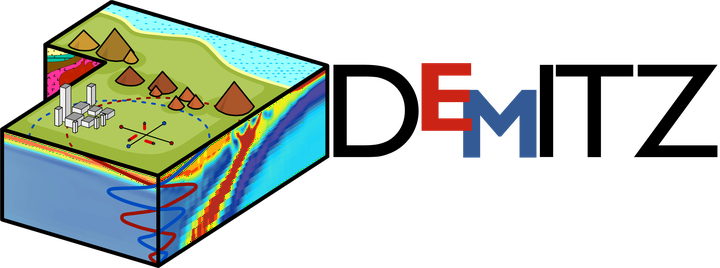DFG Grant for Andreas Junge

The proposal suggests a large scale magnetotelluric (MT) investigation of the conductivity distribution within magmatic systems in the context of tectonic processes, exemplarily for the Tepic-Zacoalco Rift in Western Mexico. Deep crustal and upper mantle conductivity anomalies allow conclusions about the linkage between magma chambers resp. a common source at greater depth. Furthermore, we expect that the analysis of the spatial distribution of possible anisotropic conductivity will hint at magma related fracture systems and their interaction with the graben structure. Within the upper mantle, anisotropy may characterize geodynamic processes related to subduction nearby.
The proposal, based on a recent dissertation by Philip Hering within the working group of the proponent, verified two conductivity anomalies within the Ceboruco Volcano and an anisotropic layer at 10 km depth. The volcano is located, among other volcanoes, within the Tepic-Zacoalco Rift. Thus 48 MT broadband systems and 12 long period sites shall be installed within a 150km x 100km large area around the volcano. The data will be processed by the Frankfurt software package FFMT developed within the dissertation. It uses an Eigenvalue criterion for calculating robust MT transfer functions (TF), such as impedance tensors, CARTs (complex apparent resistivity tensor) and tipper vectors, for the frequency range 103-10-4 Hz from simultaneously recording MT systems. The dissertation shows that for the long period range the spatially consistent pattern of the phase tensor ellipses may represent anisotropic properties of the conductivity. The pattern was reproduced by a preliminary study for MT data from the San Pedro volcano nearby. As CARTs and tippers are not influenced by static-shift phenomena, the distance between sites is adapted to the target depth, allowing regional coverage by the number of sites mentioned above.
Modeling comprises two steps: At first, the transfer functions are inverted using ModEM, a widely used inversion code for the computation of isotropic 3D conductivity anomalies. Secondly, the model resp. the data fit is improved stepwise by the implementation of anisotropic bodies and the calculation of the TFs by Comsol Multiphysics® FE software. In particular, we will investigate the influence of large scale heterogeneities and/or anisotropy of the electrical conductivity on the observed phase differences. Finally, the conductivity model will be interpreted within the petrophysical resp. the tectonic- geodynamic context, considering the findings of other geoscientific investigations. DEMITZ will contribute substantially to the overall description of magmatic processes triggered by subduction and subsequent tectonic and geodynamic processes.